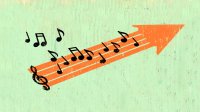Making a Music Video to Build Staff Camaraderie
Tips for how your school staff can work together to create a fun music video, which can build community and a sense of school identity.
Your content has been saved!
Go to My Saved Content.Having positive, lasting relationships with colleagues is one of the most important components of a meaningful work experience. These relationships are usually fostered through lunch conversations, co-teaching, room sharing, or the occasional gathering. But at our school, we’ve developed a new tradition that provides another exciting way for staff to build community: We create music videos together—you can check out our latest below.
Collaborative video creation can lead to engaging products to share with students or to play at events like a school talent show, a faculty retirement party, a fundraiser, or special days throughout the academic year. And the process need not be daunting; here’s how we’ve approached our video projects, which have enlivened our staff and boosted camaraderie.
Picking the Song and Situation
The song drives the message and energy of a video, so take time to select one that feels meaningful. Something that is upbeat and positive, has a build, is familiar to students, and is appropriate for school garners the best results—usually, this means a top hit from the past year.
Videos are especially fun for students to view when they put staff in situations that contradict traditional teacher roles. To students, teachers are responsible rule-followers. Seeing teachers sing and dance helps break that mold a bit. One year, we had the football coach do ballet and the office secretary perform a heavy metal song with spiked shoulder pads. Look for situations that place teachers in roles that drastically challenge the mold that students see them in.
Setting the Scene
When the song and situation have been decided, you’ll need to select locations to film the teachers playing their roles. Schools have many facilities that are good for filming—classrooms, libraries, gymnasiums, hallways. Less obvious places include the boiler room, bathrooms, loading docks, and greenhouses. Sometimes, the less obvious places are better, because students are not used to seeing teachers in those locations.
Of course, locations beyond school are also possible, according to the needs of the video. When contacting locations to ask for permission to use their space, I’ve found most to be agreeable when I share the project’s purpose; local businesses are often open to helping teachers and have rarely asked me to pay.
Costumes and Choreography
Costumes and props are important for a polished production, so don’t underestimate the details. If you’re filming a boxing scene, for instance, don’t just tell your teacher actors to show up in “boxing gear”; do your homework on what boxers wear. How about the people in the boxer’s corner? Conducting research allows you to think deliberately about what you ask of teachers.
Of course, costumes are only part of what creates excitement in music videos; choreography is equally important. To get the best energy, we follow two guidelines: When filming one individual dancing, we let them dance naturally, without choreography; when filming groups, we arrange everyone symmetrically, some closer to the camera than others for depth, and prescribe a bit of choreography.
We’ve found it helpful to search for choreography videos connected to our chosen song. We pick the simplest and select only one or two moves to teach each group, which keeps things fun and accessible.
Getting Staff Involved
I’ve found it is best to complete the steps above before recruiting staff. When most of the planning is complete, send an email to staff outlining the vision and detailing opportunities to get involved.
Include a Google Form in the email to collect lists of teachers who are interested and to capture which scenes and situations appeal to them. Then, send emails to the various groups to communicate costume needs and find common times to meet at the designated locations for filming.
Planning and Shooting Scenes
Before filming, make a list of shots you want to get. Be specific. If you’re filming a billiards scene, you might write down things like “Close-up of the ball going in,” “Teacher dancing in between tables,” and “Group dancing with pool cues in hand.”
You’ll need a video camera, which can simply be your phone; a second device to play the song; and a portable speaker. When filming dances, keep the camera at waist level, and slowly move toward and away from dancers to create more motion and energy. Be intentional about selecting a background for the dancers. Often, a symmetrical background is best. Though not necessary, a stabilizing gimbal goes a long way in keeping the camera motion smooth, producing higher quality scenes.
Editing and Sharing
When editing, insert the audio track of the song into your chosen editing software. Then, insert short clips of dancing over the music. It’s important to line up dancing clips with the music so that the dancers’ movements match the song.
String together the completed clips with an eye toward building excitement. I like to hold some of the most energetic scenes until the end of the song, which usually builds to a crescendo.
Once your final product is complete, prepare for the big reveal: Create anticipation by sharing trailers with the student body, and plan a time to come together for the premiere. Doing so creates a rich opportunity to build community among students, staff, and faculty, fostering institutional identity while deepening relationships.
